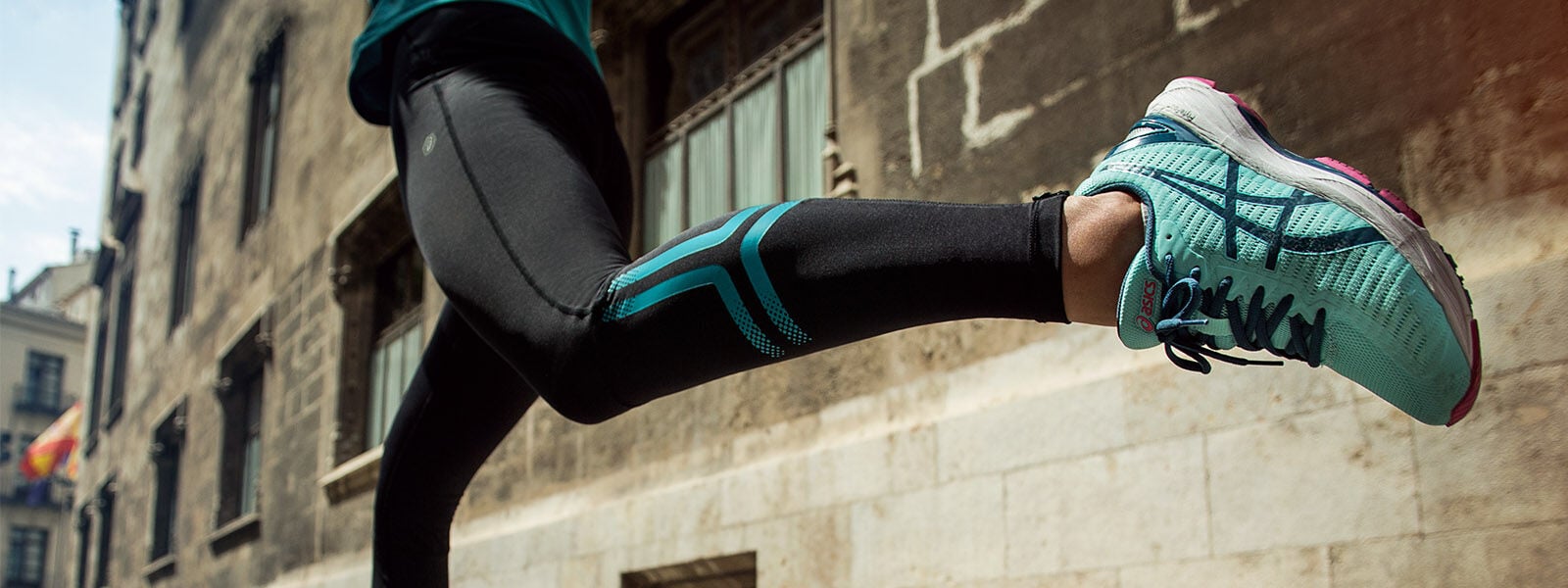The anatomy of a running shoe
Understanding running shoe design isn’t just important for trainer designers. Whether you’re new to running or have a few marathons under your belt, it’s highly valuable to know what exactly is going on around your feet. Getting familiar with the anatomy of a running shoe will help you to work out which kinds of shoes are right for you, and it could also explain why certain shoes are comfortable for you, while others hurt.
And of course, you can show off your knowledge at your next running club meeting too.
Understand the fundamentals of a running shoe’s design
The design in all kinds of shoes can be split into two main sections – the upper and the sole unit.
Upper: The uppers of most running shoes use a synthetic mesh fabric, although sometimes fabric, knit, leather and plastics are incorporated.
Sole unit: Soles include the tread on the bottom of the shoe and the outsole, as well as the midsole.
During production, the upper and the sole unit are normally glued together and may be further reinforced with stitching. They are left to set around a last, which is a kind of wood, metal or plastic mould in the shape of a human foot. The different sections of the upper also tend to be stitched or glued together.
Let’s look at each of these sections in turn.
Running shoe design – the upper
The upper of a running shoe uses a collection of technologies to offer a lightweight, breathable and supportive structure to keep your foot in place:
Tongue: Normally separate from the rest of the upper, the tongue protects your foot from lace pressure while also allowing for extra space when putting your shoes on. In trail running shoes, the tongue may not separate from the rest of the upper in order to prevent grit, stones or twigs getting inside the shoe.
Toe box: The toe box is found at the front end of the shoe. It is designed to give your toes space to wriggle. If your toes spread or you have a condition such as bunions, it’s worth investigating shoes that have a wide toe box.
Heel cuff/collar: This is the section which wraps around your ankle. It must be supportive and keep your ankle in place. The heel cuff is an exoskeleton, made of inflexible materials.
Quarter and vamp: These sections are the material which connects the toe box to the rear and sides of the shoe.
Laces: These can be adjusted to make the shoe feel more or less tight, and are passed through the eyelets. There are many different ways of lacing shoes, so it’s worth experimenting to find what’s comfortable for you.
Sock liner: The sock liner is a removable, thin foam which provides additional in-shoe support. It can be removed to replace or wash.
Running shoe design – the sole
The sole of a running shoe protects your feet from varying terrains and gives you extra cushioning to protect your feet and joints from the force of running on hard ground:
Cushioning: In running shoes, cushioning is provided in two ways – through foam soles and proprietary cushioning technologies:
- Foam midsole: the midsole sits between the tread/outer sole and the inside of the shoe and is typically made from foam. There are many different kinds of foam available for running shoes, each of which has its own properties. Foams are made from a range of synthetic polymers with millions of tiny air bubbles inside. When running, these air bubbles absorb pressure but then bounce back into shape.
- Proprietary cushioning technologies: At ASICS, we developed our GEL cushioning material in the 1980s, and it’s been used on millions of shoes ever since. The GEL is built into the midsole at strategic positions to provide support and cushioning.
Tread: The tread is the grip part of the sole and is often made with rubber or a rubber composite material. The tread may use different sized lugs for grip and support for running on different kinds of terrain.
Space trusstic: This is a plastic bridge found under the arch section of the shoe. It’s sometimes known as a shank.) The space trusstic gives the shoe strength and stability.
Medial post: In stability shoes, you might also notice a piece of different-coloured foam in the midsole – this is called a medial post. It is normally a piece of harder foam found on the inner side of the shoe, stretching from the heel to the midsole. The medial post is intended to give extra support to runners who overpronate and aims to help ‘correct’ the foot’s motion.
Now that you know more about the anatomy of a running shoe, use our shoe finder tool to find shoes that contain the features that will help you the most.



